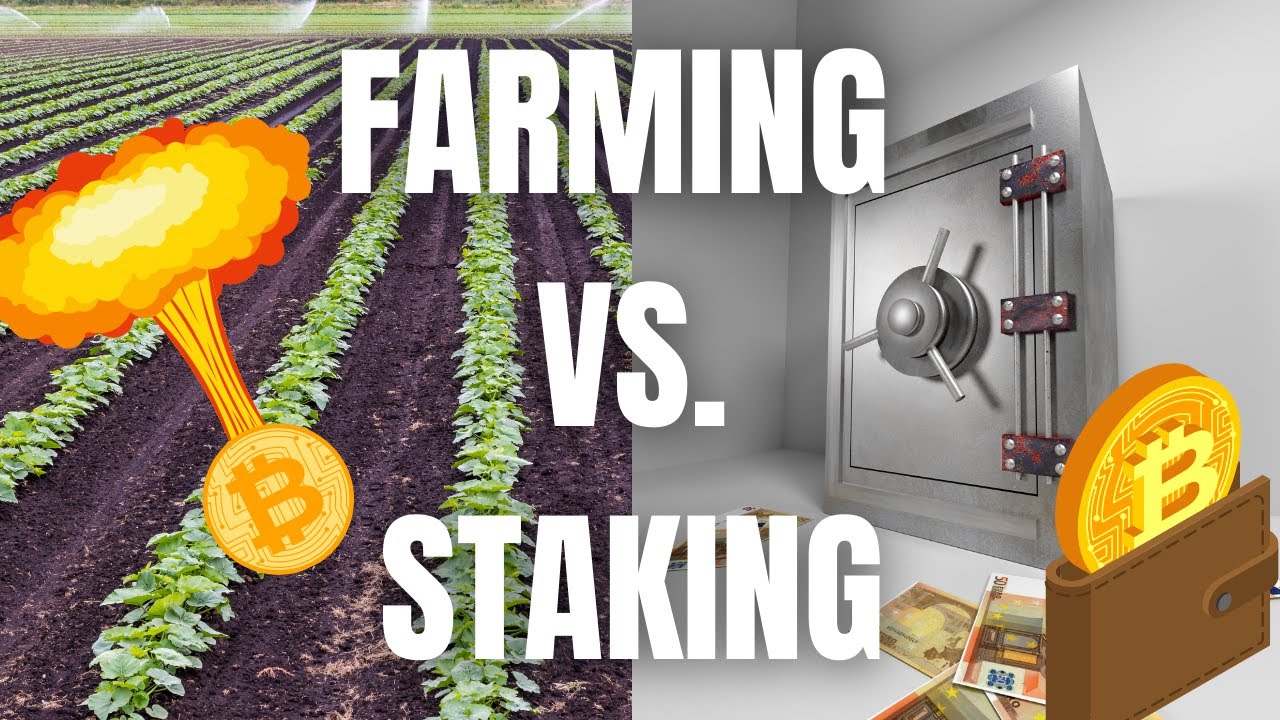As the cryptocurrency market continues to evolve, investors are seeking new ways to earn passive income through digital assets. Yield farming and staking have emerged as two of the most popular strategies, each with its own benefits and risks. In this in-depth analysis, we will compare and contrast yield farming and staking to determine which method is better suited for crypto investors.
I. Overview of Yield Farming and Staking
A. Yield Farming
Yield farming, also known as liquidity mining, is a strategy that involves locking up cryptocurrencies in a decentralized finance (DeFi) protocol to earn rewards. Investors provide liquidity to decentralized exchanges (DEXs) by depositing their assets into smart contracts, which are then used by other traders to facilitate transactions. In return, investors receive fees and/or token rewards.
1. Pros of Yield Farming:
a. Potentially high returns: Yield farming can offer significantly higher returns than traditional investments, sometimes in excess of 100% APY (Annual Percentage Yield).
b. Diversification: By investing in multiple protocols and assets, yield farmers can mitigate risk and potentially increase overall returns.
2. Cons of Yield Farming:
a. High risk: Yield farming involves the risk of smart contract vulnerabilities, impermanent loss, and fluctuating yields, which can lead to substantial losses.
b. Complex and time-consuming: Yield farming requires a deep understanding of DeFi protocols and constant monitoring of the market to maximize returns.
B. Staking
Staking is the process of locking up cryptocurrencies in a wallet to support the operations of a blockchain network. In return, investors earn a portion of the transaction fees or new tokens generated by the network. This method is particularly popular in Proof of Stake (PoS) and Delegated Proof of Stake (DPoS) blockchain networks.
1. Pros of Staking:
a. Lower risk: Staking typically involves less risk than yield farming, as it doesn’t rely on complex smart contracts or third-party protocols.
b. Predictable returns: Staking rewards are usually more consistent and predictable than yield farming returns, making it easier for investors to plan long-term strategies.
2. Cons of Staking:
a. Lower returns: Staking generally offers lower returns compared to yield farming, although the risk is also lower.
b. Lock-up periods: Staking often requires investors to lock their assets for a certain period of time, reducing liquidity and the ability to quickly respond to market changes.
II. Factors to Consider When Choosing Between Yield Farming and Staking
A. Risk Tolerance
Risk tolerance is a crucial factor to consider when choosing between yield farming and staking. Investors with a high-risk tolerance may be more inclined to pursue yield farming, while those seeking more stable returns may opt for staking.
B. Investment Goals
Investment goals should also influence the decision. Investors looking for short-term gains and diversification may prefer yield farming, while those focused on long-term, passive income may choose staking.
C. Technical Expertise
Yield farming typically requires a higher level of technical expertise and ongoing management than staking. Investors must understand the intricacies of DeFi protocols and be prepared to actively manage their investments.
D. Market Conditions
The relative attractiveness of yield farming and staking can change with market conditions. For example, during periods of high network congestion or increased transaction fees, staking may become more appealing.
III. Real-World Examples and Case Studies
A. Successful Yield Farming Strategies
- Compound Finance: In June 2020, Compound Finance, a prominent DeFi lending platform, introduced its native governance token, COMP. Users who provided liquidity to the platform were rewarded with COMP tokens, leading to a surge in interest and a significant increase in the platform’s total value locked (TVL). This event marked the beginning of the yield farming craze.
- Yearn.finance: Yearn.finance is another successful example of yield farming. The platform aggregates various DeFi lending protocols to help users automatically earn the highest possible yield on their assets. Its native token, YFI, has seen substantial growth since its launch, with investors earning significant rewards.
B. Successful Staking Projects
- Cardano (ADA): Cardano is a popular PoS blockchain platform that allows ADA token holders to stake their assets to earn rewards. With a strong community and a growing ecosystem, Cardano staking has attracted many investors, resulting in over 70% of the total ADA supply being staked as of September 2021 [1].
Reference: [1] https://www.stakingrewards.com/earn/cardano
- Polkadot (DOT): Polkadot is another well-known PoS-based blockchain platform that enables investors to stake DOT tokens to earn rewards. With its unique approach to interoperability and scalability, Polkadot has attracted significant interest from investors, making it one of the largest staking projects in the crypto industry.
Conclusion:
In conclusion, both yield farming and staking offer unique opportunities for crypto investors to generate passive income. While yield farming has the potential for higher returns, it also carries a higher risk and requires more technical expertise. On the other hand, staking offers more predictable returns with lower risk but may have lower overall yields. Ultimately, the choice between yield farming and staking should be based on an investor’s risk tolerance, investment goals, technical expertise, and market conditions. By carefully considering these factors, investors can make informed decisions and choose the strategy that best aligns with their objectives.
FAQs
At its essence, staking involves locking up a certain amount of a coin to support a network’s operations. Yield farming, on the other hand, is like a crypto “green thumb” game where you lend or provide liquidity to earn rewards.
Not always! APYs for yield farming can be eye-popping, but they fluctuate. Sometimes you’ll strike gold; other times, staking might be the steadier ship.
Yield farming generally has higher risks, especially with impermanent loss and rug pulls. Always DYOR (Do Your Own Research) before jumping into any farming pools.
Ah, the dreaded IL! It’s when your pooled tokens lose value compared to just holding them. Happens a lot in volatile yield farming scenarios.
Depends on the protocol. Some have lock-up periods or “unbonding” times. Always read the fine print, or you might get “rekt.”
Yield farming, especially on Ethereum, can get gas-guzzly! Staking, especially with ETH 2.0, aims to be more gas-efficient.
It’s when rogue devs drain the pool, leaving farmers high and dry. Always ensure you’re farming on reputable platforms to dodge these shifty moves.
Nah! Different coins have different staking rewards. Also, some offer dynamic rewards depending on network activity or tokenomics.
It’s all about your risk appetite. Want more stability? Staking’s your jam. Feeling adventurous and ready to dive deep? Try farming, but always cap your risk.
Absolutely! Diversify and spread your assets. It’s like having both bread and butter in your crypto breakfast.
For sure! Stick to well-known platforms, keep track of your liquidity position, and always have an exit strategy. No mooning without a parachute!
Toughie! Staking’s more passive and stable. Yield farming can be a gold mine, but it’s ever-evolving. As always in crypto, adaptability’s the key.



